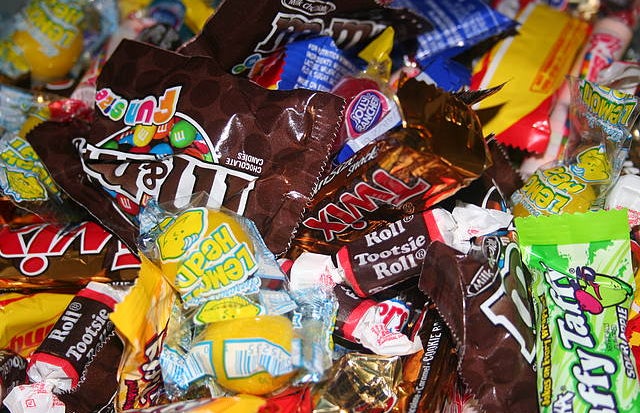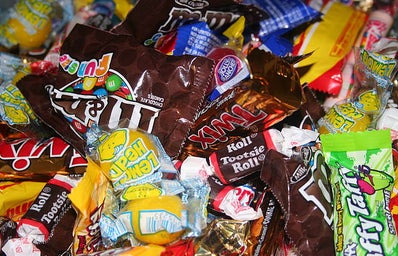I am a simple woman. I see chocolate in a dessert, I eat it. Halloween is one of the biggest seasons for chocolate, and certainly the most wonderful time of the year for the palette of any chocoholic.
Don’t get me wrong, Halloween should be scary…but certainly not when it comes to my candy. Sadly, the realities of the production practices behind major companies in the chocolate industry are just not worth the trick or the treat. But don’t fret — you can be a more ethical consumer of chocolate this Halloween season, and beyond!
Does the chocolate industry really use child slaves?
Unfortunately, yes. Chocolate is primarily a product of Africa, Asia, and Latin America due to their tropical climates, which deem them an ideal environment for the cacao plant. Some chocolate producing organizations have been exposed for use of child labor and slavery in Western Africa, resulting in the chocolate industry becoming more secretive with their farms and information.
Companies often have to use child labor in order to keep prices competitive, and most of these children are between the ages of 12 and 16, with some sources finding child slaves as young as 5. These children typically must climb trees and cut bean pods using a machete, or cut down trees using a chainsaw, and then pack cocoa bean pods into 100-pound sacks that they must drag through the forest. Sometimes, if they don’t move fast enough, they are beaten. Their workday lasts around 13 hours every day at the very least. These working conditions are extremely hazardous and labor-intensive, in addition to the fact that they aren’t fed adequately by the farm owners. Many of these consequences violate the International Labour Organization’s Child Labor Standards.
What chocolate companies knowingly use child slavery to make their chocolate?
Many of the mainstream candy bar brands implement child slavery into their farming practices. While Hershey’s, Nestle, Mars, and more have pledged to lift their child slavery practices from their process, they still have yet to fulfill this promise. Below I have listed some of the popular brands that still implement child slavery in their farming practices.
Cadbury
Ferrero: Nutella
Hershey’s: Reese’s, Mounds, Almond Joy, York, Kit Kat
Lindt: Ghirardelli Squares, LINDOR Truffles
Mars: Mars Bar, M&M, Milky Way, Twix, Snickers
Nestlé: Crunch, Rolo, Butterfinger
Toblerone
Unilever: Breyers Ice Cream
If you’re a nut lover like me, your first reaction was— “no Reese’s or Nutella? No way!” Put down your pitchforks because I promise you, I will still be indulging in the decadent hazelnut spread and my nut butter cups while keeping it ethical. Keep reading for how you can, too.
How can I purchase slave-free chocolate?
While it is difficult to determine with certainty whether the chocolate you purchase has its roots in child slavery practices, it is safe to ask these questions when buying:
-
Does it come from West Africa? If it does, chances are the company implements child-slavery practices.
-
Does it have a Fair Trade certification label? “Fair Trade” implies that the growing and making of the product can be monitored at a farm level, thus chances are there are no inhumane slavery practices behind the product. Click here for pictures of fair trade labels and for additional information on fair trade.
-
Is the chocolate “bean to bar” (made locally)? If so, the company likely does not implement slavery in farms overseas.
Below is a list of my personal favorite chocolate brands from areas where child labor is not prevalent:
Chocolate Hazelnut Spreads: Barefoot & Chocolate Hazelnut Chocolate Spread, Barilla’s “Pan di Stelle” Hazelnut Cream, Justin’s Chocolate Hazelnut Butter, Rapunzel Chocolate Organic Chocolate Hazelnut Butter
Cocoa Powder: Kroger Cocoa Powder (great for baking and hot chocolate)
Ice Cream: Ben & Jerry’s, Cado (vegan), Three Twins Ice Cream, 365 Everyday Value Ice Cream
Cookies and other Desserts: Enjoy Life, Late July, Newman’s Own, Trader Joe’s
Nut Butter Cups: eatingEVOLVED Keto Cups, Justin’s Peanut Butter Cups, UnReal Peanut Butter Cups
Chocolate Bars: Equal Exchange, Hu Chocolate, Mast Brothers Chocolate, Taza Chocolate, Theo Chocolate, Tony’s Chocolonely Chocolate
Barks, Chips, Kisses, and other Chocolatey Bites: barkTHINS, Enjoy Life Chocolate Chips, Hu Chocolate Gems, PRANA Chocolate Bark, Trader Joe’s, UnReal Chocolate Gems, 365 Everyday Value
For a more extensive list, consult the Food Empowerment Project’s website (F.E.P.) for more ethical chocolate companies.
Why should I switch to slave-free chocolate?
-
You are taking one small step closer to shopping ethically.
-
You become a more mindful spender.
-
A way of boycotting companies that violate human rights.
-
You contribute to the call for change towards the chocolate industry.
-
You support local economies by purchasing chocolate made in local businesses from bean to bar.
Happy October, and happy chocolate season!



